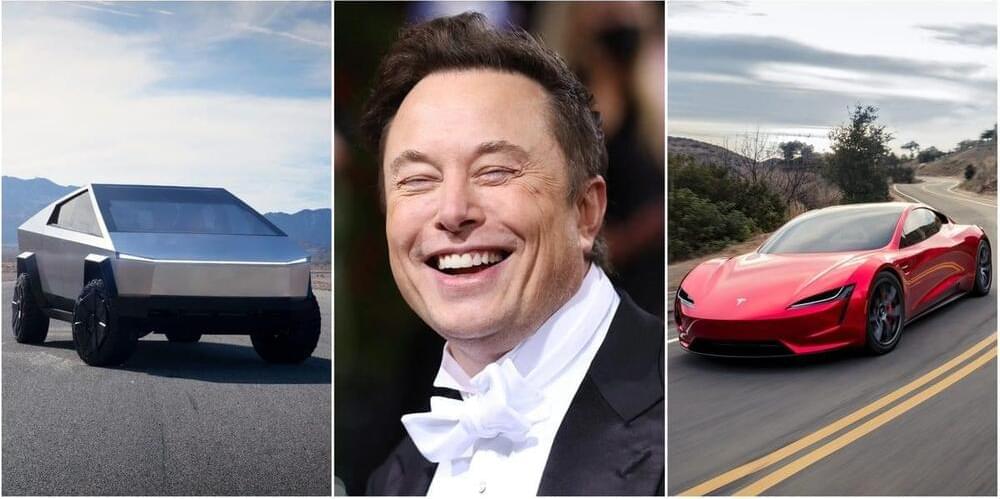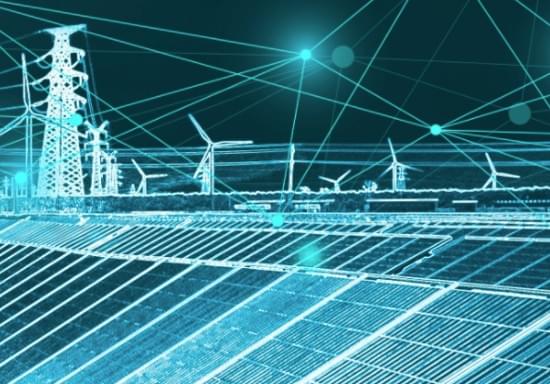Archive for the ‘sustainability’ category: Page 178
Jan 28, 2023
Electric vehicles more expensive to fuel than gas-powered cars at end of 2022: consulting firm
Posted by Nicholi Avery in categories: economics, sustainability, transportation
It was cheaper to fuel a gas-powered car for 100 miles than it was to charge a comparable electric vehicle in late 2022, according to Anderson Economic Group.
Jan 27, 2023
European farms mix things up to guard against food-supply shocks
Posted by Michael Taylor in categories: biotech/medical, climatology, economics, sustainability
Greater diversification could help agriculture withstand climate, economic and geopolitical crises.
“Items in this section have limited availability due to supplier production issues,” “Sorry, temporarily out of stock” and “Sold out” are all signs that became familiar as recent global upheavals exposed how precarious our food supply is.
The COVID-19 pandemic led to bare shelves in supermarkets as shipping routes were cut off. The war in Ukraine has affected the supply of essential grains.
Jan 27, 2023
Elon Musk reiterates his belief that Tesla will ‘be the most valuable company on earth’ amid record quarter for the EV maker
Posted by Kelvin Dafiaghor in categories: business, Elon Musk, sustainability, transportation
Musk also teased that new products are under development, which presumably could be a new car model. Wall Street analysts expect a lower-cost EV that they have dubbed the “Model 2.”
“I should also say that we have other products in development. We’re not going to announce them obviously but they’re very exciting and I think we’ll blow people’s minds when we reveal them,” Musk said.
Other areas of growth for the company include Tesla insurance, which is currently at an annual premium run rate of $300 million. “We’re growing 20% a quarter so it’s growing faster than the growth in our vehicle business,” CFO Zachary Kirkhorn said.
Jan 26, 2023
How Quantum Computing Will Transform Our World
Posted by Jose Ruben Rodriguez Fuentes in categories: climatology, economics, encryption, finance, government, internet, mathematics, military, quantum physics, space, supercomputing, sustainability
Tech giants from Google to Amazon and Alibaba —not to mention nation-states vying for technological supremacy—are racing to dominate this space. The global quantum-computing industry is projected to grow from $412 million in 2020 to $8.6 billion in 2027, according to an International Data Corp. analysis.
Whereas traditional computers rely on binary “bits”—switches either on or off, denoted as 1s and 0s—to process information, the “qubits” that underpin quantum computing are tiny subatomic particles that can exist in some percentage of both states simultaneously, rather like a coin spinning in midair. This leap from dual to multivariate processing exponentially boosts computing power. Complex problems that currently take the most powerful supercomputer several years could potentially be solved in seconds. Future quantum computers could open hitherto unfathomable frontiers in mathematics and science, helping to solve existential challenges like climate change and food security. A flurry of recent breakthroughs and government investment means we now sit on the cusp of a quantum revolution. “I believe we will do more in the next five years in quantum innovation than we did in the last 30,” says Gambetta.
But any disrupter comes with risks, and quantum has become a national-security migraine. Its problem-solving capacity will soon render all existing cryptography obsolete, jeopardizing communications, financial transactions, and even military defenses. “People describe quantum as a new space race,” says Dan O’Shea, operations manager for Inside Quantum Technology, an industry publication. In October, U.S. President Joe Biden toured IBM’s quantum data center in Poughkeepsie, N.Y., calling quantum “vital to our economy and equally important to our national security.” In this new era of great-power competition, China and the U.S. are particularly hell-bent on conquering the technology lest they lose vital ground. “This technology is going to be the next industrial revolution,” says Tony Uttley, president and COO for Quantinuum, a Colorado-based firm that offers commercial quantum applications. “It’s like the beginning of the internet, or the beginning of classical computing.”
Jan 26, 2023
First nuclear-powered Bitcoin mine to start operations in US this year
Posted by Gemechu Taye in categories: bitcoin, computing, nuclear energy, sustainability
This will reduce carbon emissions from mining operations but is that the only way?
TeraWulf, a Minnesota-headquartered company, will become the first entity in the U.S. to power its Bitcoin mining operations with nuclear energy, CNET.
Luza studios/iStock.
Continue reading “First nuclear-powered Bitcoin mine to start operations in US this year” »
Jan 26, 2023
An Energy News Bulletin: About the Latest on Solar Cells, Energy Storage and Power Transmission
Posted by 21st Century Tech Blog in categories: solar power, sustainability
A new solar cell breakthrough, an energy vault comes to Northern California, and Bill Gates talks about the U.S. bringing the grid into the 21st century.
UCLA invents enhanced perovskite solar cells, PG&E partners with Energy Vault on a storage project, and Bill Gates talks about power lines.
Jan 25, 2023
Self-cooling tent runs using just water and sunshine
Posted by Genevieve Klien in categories: climatology, engineering, sustainability
For many avid outdoorspeople, summertime and camping go hand in hand. But as climate change continues to drive summer temperatures higher, outdoor recreation could become less relaxing—and cooling technologies like fans and portable air conditioners require electricity that is seldom available at the average campsite.
Seeing an unmet need, UConn researcher Al Kasani, working with Technology Commercialization Services (TCS) and the university’s Center for Clean Energy Engineering (C2E2), has developed a new off-grid technology that allows a tent’s internal temperature to cool up to 20°F below the ambient temperature.
The tent requires just one external element to function, one that is typically found in abundance around campsites: water. A single gallon of water can power the tent’s cooling technology for up to 24 hours.
Jan 25, 2023
Tesla Plans $3.6 Billion Factory Expansion in Nevada
Posted by Genevieve Klien in categories: business, sustainability, transportation
The EV maker said it would keep growing its lithium-ion battery and electric-truck businesses and employ 3,000 additional workers.
Jan 25, 2023
Recycling lithium-ion batteries from electric vehicles
Posted by Quinn Sena in categories: energy, health, sustainability, transportation
Year 2019 face_with_colon_three
For high-cobalt cathodes such as lithium cobalt oxide (LCO) conventional pyrometallurgical (see section ‘Pyrometallurgical recovery’) or hydrometallurgical (see section ‘Hydrometallurgical recovery’) recycling processes can recover around 70% of the cathode value11. However, for other cathode chemistries that are not as cobalt-rich, this figure drops notably11. A 2019 648-lb Nissan Leaf battery, for example, costs US$6,500–8,500 new, but the value of the pure metals in the cathode material is less than US$400 and the cost of the equivalent amount of NMC (an alternative cathode material) is in the region of US$4,000. It is important, therefore, to appreciate that cathode material must be directly recycled (or upcycled) to recover sufficient value. As direct recycling avoids lengthy and expensive purification steps, it could be particularly advantageous for lower-value cathodes such as LiMn2O4 and LiFePO4, where manufacturing of the cathode oxides is the major contributor to cathode costs, embedded energy and carbon dioxide footprint95.
Direct recycling also has the advantage that, in principle, all battery components20 can be recovered and re-used after further processing (with the exclusion of separators). Although there is substantial literature regarding the recycling of the cathode component from spent LIBs, research on recycling of the graphitic anode is limited, owing to its lower recovery value. Nevertheless, the successful re-use of mechanically separated graphite anodes from spent batteries has been demonstrated, with similar properties to that of pristine graphite96.
Continue reading “Recycling lithium-ion batteries from electric vehicles” »

















